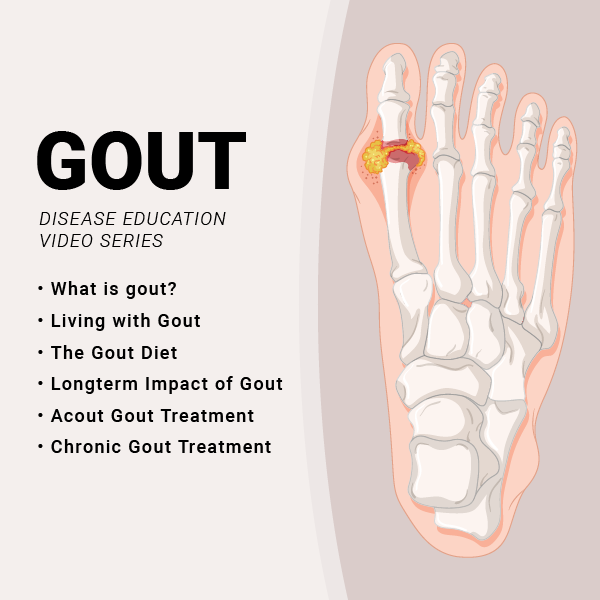What Is Gout?

Gout Symptoms
The symptoms of gout tend to be progressive and will worsen over time if left untreated. The severity and recurrence of symptoms are largely related to the stage of the disease.1
Asymptomatic gout is the period prior to your first attack. It is during this time that the persistent elevation of uric acid in your blood will cause urate to form crystals. While you will not experience any symptoms at this stage, the gradual accumulation of crystals will almost inevitably lead to an attack.
Acute intermittent gout is the stage when you will start to experience attacks lasting anywhere from three to 10 days. The attacks (most commonly affecting the big toe but also the knee, ankle, heel, midfoot, elbow, wrist, and fingers) will cause sudden and extreme pain accompanied by swelling, stiffness, redness, fatigue, and occasionally mild fever.
Chronic tophaceous gout is an advanced stage of disease in which the urate crystals consolidate into hardened lumps called tophi. The formation of these mineralized masses can progressively erode bone and cartilage tissue and lead to chronic arthritis and joint deformity.
Complications of untreated gout include kidney stones and the deterioration of kidney function.
From Very Well Health


:max_bytes(150000):strip_icc():format(webp)/overview-of-gout-4160956_final-323069ddb60044119b534e7c25e4e4ab.png)



Validate your login
Sign In
Create New Account